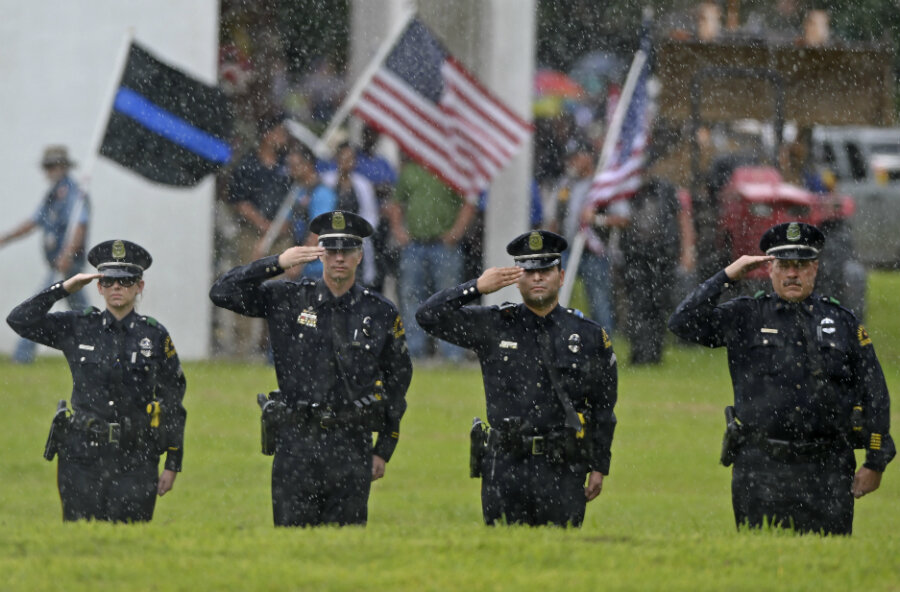Despite recent surge, overall police officer fatalities show sharp decline
Loading...
Shooting deaths of police officers jumped 78 percent this year, driven partly by the ambushes in Dallas and Baton Rouge, according to a report from the National Law Enforcement Officers Memorial Fund (NLEOMF).
Thirty-two officers have been killed by firearms so far in 2016, compared to 18 over the same period in 2015. The number of total police fatalities was also up by 8 percent, with 67 officers dying in the line of duty.
The charity typically releases its report compiling data on police violence for the first half of the year, but chose to lengthen the period analyzed after five officers in Dallas and three in Baton Rouge died in ambushes in July. Fourteen officers were shot and killed in ambushes, concluded the group, while 12 others died after stopping a suspicious person or while carrying out arrests or high-risk warrants.
“All American citizens should be outraged at the number of officers who have been targeted, shot and killed this year,” said NLEOMF President Craig W. Floyd in a statement. “The brutal assassinations of law enforcement officers in Texas and Louisiana shocked our nation and we saw similar ambush attacks on officers in other parts of the country earlier this year.”
With partisan divisions deeper than they have been in decades, some fear that the United States is returning to a period of social turmoil akin to that of the 1960s and 1970s.
Republican nominee Donald Trump has accused Black Lives Matter protestors of “looking for trouble” and planted blame for the Dallas and Baton Rouge shootings squarely on their shoulders.
"I have seen them marching down the street essentially calling death to the police and I think we're going to have to look into that," Mr. Trump said earlier this month.
But data collected by the NLEOMF indicates that despite the recent uptick, the number of officers shot and killed on the job has declined significantly over the years.
Floyd told the Associated Press that 127 officers were killed by firearms on average during the 1970s, compared to 52 from 2005-2015, crediting advances in body armor and trauma care.
And the 32 shooting deaths among officers so far in 2016 put it below the pace of such incidents in 2007 and 2011, when 70 and 73 officers were shot to death on the job, respectively.
In the group’s analysis, Texas led the nation in police fatalities, with 13. It was followed by Louisiana, with seven, and then California, Colorado, Florida, Maryland, Michigan, Ohio and Virginia, all of which saw three officers die so far this year.
Traffic-related incidents were the second most common reason for officers’ deaths, with 24 officers dying so far this year – a 17 percent decrease from 2015. And 11 others died from other causes, including six from heart attacks.








